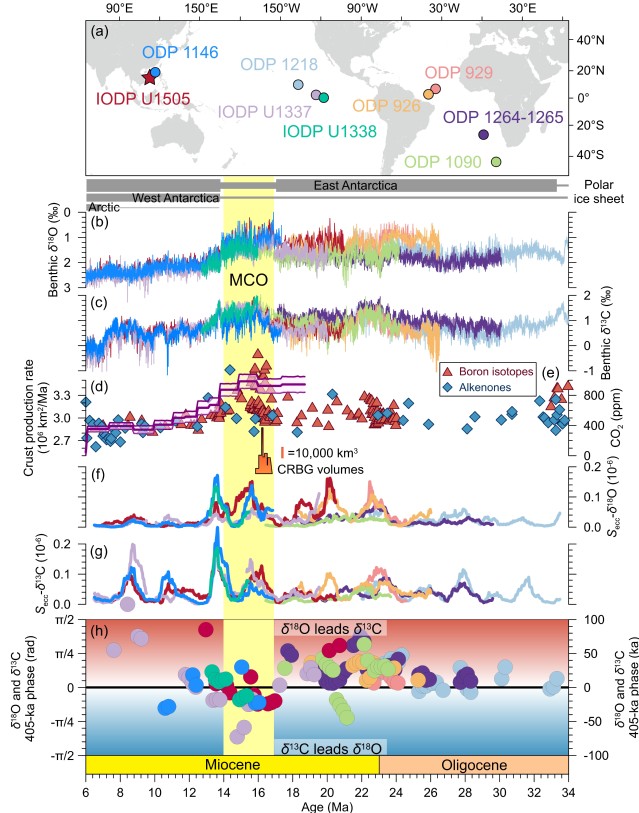Fenghao Liua, Jinlong Dua, Enqing Huanga, Wentao Mab, Xiaolin Mac, Lucas J. Lourensd, Jun Tiana
a State Key Laboratory of Marine Geology, Tongji University, Shanghai 200092, China
b State Key Laboratory of Satellite Ocean Environment Dynamics, Second Institute of Oceanography, Ministry of Natural Resources, Hangzhou 310012, China
c State Key Laboratory of Loess and Quaternary Geology, Institute of Earth Environment, Chinese Academy of Sciences, Xi’an 710061, China
d Department of Earth Sciences, Faculty of Geosciences, Utrecht University, Utrecht CB 3584, Netherlands
Abstract:Global warming during the Miocene Climate Optimum (MCO, 17–14 million years ago) is associated with massive carbon emissions sourced from the flood basalt volcanism and ocean crustal production. However, the perturbation of tectonic carbon degassing on the interaction between climate change and carbon cycle remains unclear. Here, through time-evolutive phase analysis of new and published high-resolution benthic foraminiferal oxygen (δ18O) and carbon (δ13C) isotope records from the global ocean, we find that variations in the marine carbon cycle lead the climate-cryosphere system (δ13C-lead-δ18O) on 405,000-year eccentricity timescales during the MCO. This is in contrast to the previously reported climate-lead-carbon (δ18O-lead-δ13C) scenario during most of the Oligo-Miocene (~34–6 million years ago). Further sensitivity analysis and model simulations suggest that the elevated atmospheric CO2 concentrations and the resulting greenhouse effect strengthened the low-latitude hydrological cycle during the MCO, accelerating the response of marine carbon cycle to eccentricity forcing. Tropical climate processes played a more important role in regulating carbon-cycle variations when Earth’s climate was in a warm regime, as opposed to the dominant influence of polar ice-sheet dynamics during the Plio-Pleistocene (after ~6 million years ago).
Full Article:https://doi.org/10.1016/j.scib.2023.12.052


